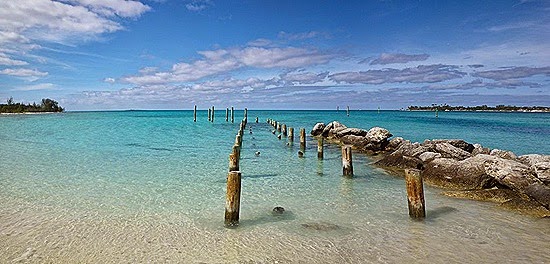
In a handful of places around the world, visitors can get a look at sites central to the 'golden age' of piracy.
The 17th and 18th centuries were the “golden age” of piracy, inspiring many myths and legends. Yes, the images of Jolly Roger-flagged ships, peg-legged sailors, plank walking, X-marked treasure maps, and hard-drinking and hard-fighting ruffians are based on fact. But the non-romanticized version of piracy is just as fascinating as the mostly fictional tales.
In a handful of places around the world, you can see this history and touch the relics of piracy's past. There are even a few spots, such as the famous Caribbean island of Tortuga, that remain havens for lawlessness.
Here are eight places where you can soak up the true tales of pirates.
Suggested Stories: (1) Researcher unearths adventures of a 17th-century pirate alliance; (2) 10 (almost) deserted islands.
1. Port Royal, Jamaica
Photo: Jessica Wadsworth/Wikimedia Commons
This Jamaican town at the mouth of Kingston Harbour was a major pirate haven in the late 17th century. The British, who controlled Jamaica at that time, left the town largely unguarded. Fearing an invasion by another colonial power, such as Spain, Port Royal's local authorities began inviting pirates to base themselves in the town. This policy, which many pirates embraced, gave Port Royal a significant population of battle-hardened fighters who could provide protection should any foreign army try to invade.
During this era, the resident pirates actually brought a great deal of wealth to Port Royal, and the local economy thrived. Today, this former haven is now a quiet coastal village with a handful of historical buildings. However, archaeological finds continue to be made both on land and in the harbour.
Suggested Stories: (1) Jamaica beats back lionfish with knife and fork; (2) 5 fresh ways to enjoy tea: Jamaican hibiscus.
2. Nassau, Bahamas
Photo: Ricymar Photography/Flickr
Another Caribbean hub during the 17th and 18th centuries, the island of New Providence, home to Nassau (the capital of the Bahamas), became a buccaneer base because of its proximity to the trade routes used by Spanish merchant ships. Pirates gained access to the ports here by bribing the local authorities. When this practice became too blatant, the British army stepped in to expel the pirates. Though a few famous individuals, including Edward “Blackbeard” Teach, fled before the British arrival, most pirates actually welcomed the change in power and remained in Nassau, taking up noncriminal professions.
It can be hard to separate history from spectacle in Nassau. The touristy Pirates of Nassau Museum features animatronic pirates and a recreated ship. Plenty of local legends are based on myths and hearsay rather than facts, but you can still see historic fortresses and other buildings from the 17th and 18th centuries in the older sections of Nassau.
3. Ile Sainte Marie, Madagascar
Photo: JialiangGao/Wikimedia Commons
Ile Sainte Marie is an island off the coast of Madagascar near what was once the main shipping channel used by merchants returning to Europe from South and East Asia. These trading vessels were loaded with riches and therefore prime targets for famous buccaneers like William Kidd.
The pirates who lived on Ile Sainte Marie left a lot of evidence of their presence. Several shipwrecks sit in very shallow waters around the island. These, along with the rich collection of marine wildlife, draw adventure-seeking divers. A pirate cemetery can be found on the island, and there are even some local people who claim that they are descended from the original pirate settlers.
Suggested Stories: (1) 13 of the ugliest animals on the planet: aye-aye; (2) Madagascar lemurs top endangered primates list.
4. Ocracoke, North Carolina
Photo: Corey Balazowich/Flickr
This tiny island on North Carolina's Outer Banks was a favourite hideout of the famous pirate Edward Teach, better known as Blackbeard. During the early 1700s, Teach and his fellow pirates anchored here often because the island was completely unsettled but very near a major shipping channel.
The trees, dunes and grasses on shore allowed Teach's lookouts to remain unseen and spot merchant ships traveling up the coast to the newly formed American colonies. Today, the places where the pirates stayed are all part of the Springer's Point Nature Preserve. A museum and shops with pirate memorabilia celebrate the connection that this little island has with one of history's most famous and fearsome pirates.
Suggested Stories: (1) Travel snapshots: North Carolina Outer Banks; (2) Comber's delight: 8 exceptional beaches for seaside treasure hunting.
5. Sale, Morocco
Photo: Anina Abdesalam/Flickr
This ancient city on Morocco’s Atlantic coastline can trace its history back to the days of the Phoenicians (well before the Carthaginian and Roman empires). In the 1600s, Salé became a haven for a band of Barbary pirates, many of whom were Muslim Spaniards who had been expelled from Spain. Though less talked-about than their peers in the West Indies, the Barbary pirates were arguably more fearsome. They raided ships and coastal areas in the Mediterranean and Europe, reaching as far north as Iceland and Ireland. They were known for taking prisoners and then selling them as slaves in North African markets.
The Salé pirates, dubbed the Salé Rovers (mentioned in Daniel Defoe's "Robinson Crusoe"), formed an independent republic in Salé at the height of their success. Many buildings in Salé and neighbouring Rabat were originally constructed in the 16th and 17th centuries, when the Rovers were in control.
Suggested Stories: (1) 10 best street markets in the world: Marrakech, Morocco; (2) 8 rock-climbing destinations for novices: Toubkal, Morocco.
6. Barataria, Louisiana
Photo: Ken Lund/Flickr
Near New Orleans in the famous Louisiana bayous, Barataria was a base for the famous pirate and smuggler Jean Lafitte. Lafitte's success as a pirate drew many of his peers to Barataria, and it quickly grew from a backwater hideout to a major hub for smuggling.
Lafitte sold his booty to local merchants and middlemen in New Orleans. He even captured Spanish slave ships and sold the slaves to Louisiana's many plantation owners. Lafitte was given a pardon for his piracy after agreeing to help U.S. forces during the War of 1812. Today Barataria is part of the Jean Lafitte National Historic Park and Preserve. Though pirate artefacts are hard to come by in the park, you can explore the landscapes where Lafitte and his army of smuggling pirates thrived more than 200 years ago.
Suggested Stories: (1) Jean Lafitte National Historical Park and Preserve: A user's guide; (2) Louisiana sinkhole swallows trees.
7. Pitcairn Island
Photo: Claude Huot/Shutterstock
Though technically mutinous sailors (from the famous HMS Bounty), not pirates, the people who first settled on Pitcairn Island have a fascinating story that is being played out today by descendants who call the island home. Because Pitcairn is in such a remote corner of the South Pacific, the Bounty's mutineers and their Tahitian companions were able to live without any outside contact for almost two decades after they escaped on the stolen ship.
The remains of the Bounty, originally burned by mutiny leader Fletcher Christian and his crew, are still visible underwater in one of Pitcairn's small bays. It is not easy to visit this island (most people arrive by ship), but if you want a truly unfiltered look at history, then this is certainly the best destination on our list.
Suggested Stories: (1) 10 European destinations that aren't in Europe: French Polynesia; (2) Infamous pirate was also one of the world's most influential naturalists.
8. Mumbai, India
Photo: Ankur P/Flickr
India's most famous pirate, Kanhoji Angre, attacked British, Dutch and Portuguese ships off the Indian western coastline in the early 1700s. In addition to extorting money from all the ships using the then-busy port of Bombay (now Mumbai), he focused his efforts on looting vessels owned by England's East India Trading Co.
You can still visit Angre's almost-impenetrable hideout at Vijaydurg Fort. You can also see remnants of his reign as India's “king of pirates” at Underi and Khanderi, both once fortified islands near the harbour. Despite the fact that Angre and other Bombay pirates extorted money from locals as well as raiding foreign ships, they are seen as heroes by many Indians because they were able, at least temporarily, to disrupt English influence in India.
Suggested Stories: (1) 6 of the saddest zoos in the world: Mumbai Zoo; (2) 8 historic buildings that are environmentally friendly: Maratha Hotel, Mumbai.
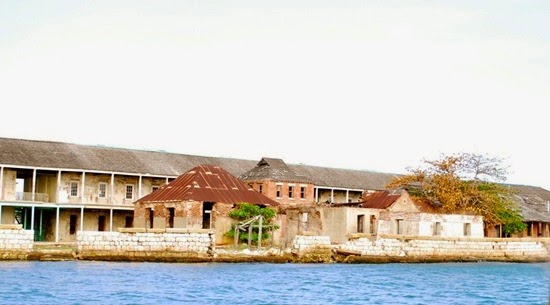
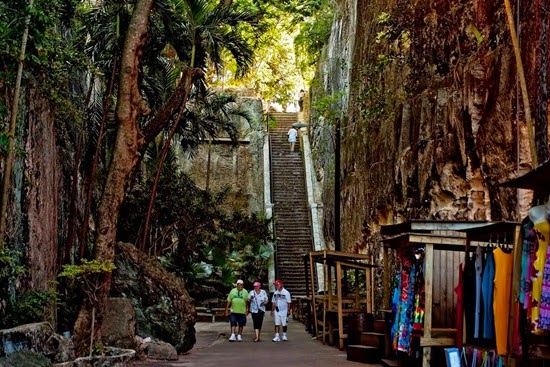
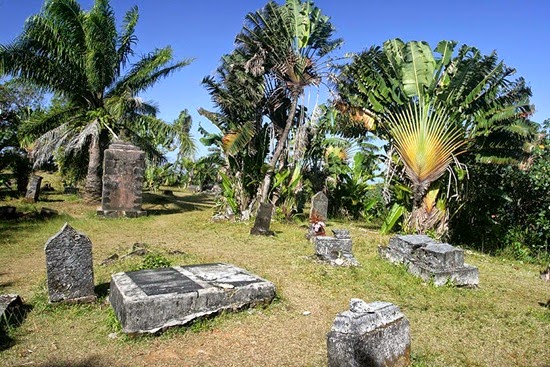
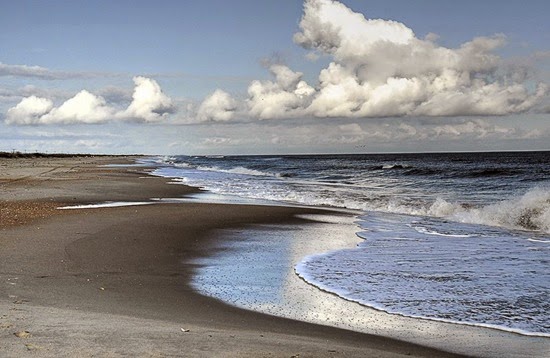
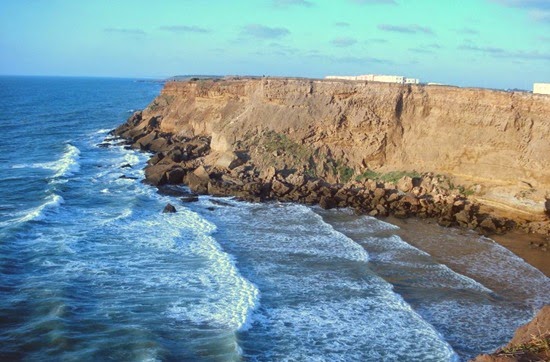


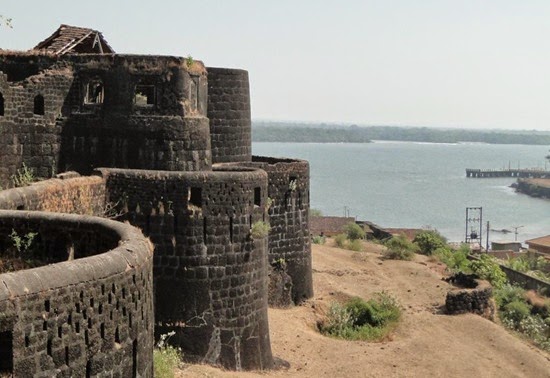
No comments:
Post a Comment
Please adhere to proper blog etiquette when posting your comments. This blog owner will exercise his absolution discretion in allowing or rejecting any comments that are deemed seditious, defamatory, libelous, racist, vulgar, insulting, and other remarks that exhibit similar characteristics. If you insist on using anonymous comments, please write your name or other IDs at the end of your message.